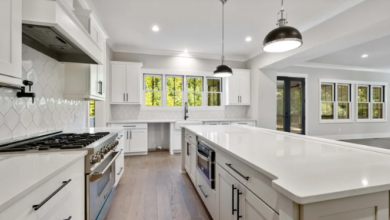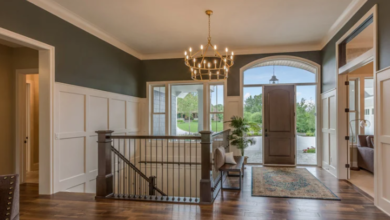How to Choose the Right Brightness Level for Your LED Strips

LED strip lights have become one of the most versatile and stylish lighting solutions for homes, offices, and commercial spaces. From accent lighting in living rooms to powerful illumination in retail stores, LED strips offer flexibility, energy efficiency, and a sleek aesthetic. However, one crucial factor that often gets overlooked when choosing LED strips is brightness.
Selecting the right brightness level is essential to achieving your desired lighting effect — too dim, and your space feels dull; too bright, and it can become uncomfortable. In this guide, we’ll walk you through everything you need to know about choosing the perfect brightness level for your LED strips.
As a trusted LED Strip Lights exporter and LED Module manufacturer, DekingLED provides high-quality LED products with customizable brightness and color options, ensuring you get the perfect lighting for every project.
Understanding LED Brightness: The Basics
Before choosing an LED strip, it’s important to understand how brightness is measured. Unlike traditional bulbs that use watts as an indicator of brightness, LED brightness is measured in lumens (lm) — the total amount of visible light emitted by a source.
Here’s a quick breakdown:
- Low brightness (150–300 lumens per meter): Ideal for subtle accent lighting.
- Medium brightness (400–700 lumens per meter): Suitable for general room illumination.
- High brightness (800–1500 lumens per meter): Perfect for task lighting or commercial spaces.
At DekingLED, every LED strip is rated for specific lumen output, giving customers a clear idea of how much light to expect — whether for cozy ambient lighting or high-intensity workspace illumination.
1. Determine the Purpose of Your Lighting
The first step in choosing the right brightness is understanding where and how the LED strips will be used.
Accent Lighting
If your goal is to add subtle highlights to a room — such as under cabinets, behind TVs, or along stair edges — a lower brightness strip (150–400 lumens/m) is ideal.
Task Lighting
For areas like kitchens, offices, or workshops where you need focused light for detailed tasks, go for medium to high brightness strips (600–1000 lumens/m).
Decorative or Mood Lighting
When lighting is used purely for aesthetics — for example, RGB LED strips behind furniture or wall coves — moderate brightness (300–600 lumens/m) works perfectly.
DekingLED, as a global LED Strip Lights exporter, provides a range of customizable LED strips suitable for every purpose — ensuring you never compromise on quality or visual comfort.
See also: Techniques for Managing Road Rage and Staying Calm Behind the Wheel
2. Consider the Installation Environment
The environment in which you install your LED strip will greatly influence how bright it appears.
Indoor vs. Outdoor
Outdoor lighting often requires higher brightness to overcome ambient light or natural sunlight. Waterproof LED strips from DekingLED are built for outdoor durability without compromising illumination levels.
Reflective Surfaces
If your installation surface is reflective (like white ceilings or glossy tiles), the perceived brightness will increase, so you can opt for slightly lower lumens.
Height and Distance
For LED strips installed high up (like ceiling coves or tall walls), choose a higher brightness strip to ensure the light reaches the intended area effectively.
As an experienced LED Module manufacturer, DekingLED provides tailored lighting modules that can adapt to varying installation heights and distances for consistent illumination.
3. Choose the Right LED Density
Another factor that determines brightness is the LED density — the number of LEDs per meter. Common densities include 30, 60, 120, and even 240 LEDs per meter.
- 30 LEDs/m: Soft and diffused light; ideal for decorative applications.
- 60 LEDs/m: Balanced brightness for most home uses.
- 120+ LEDs/m: High brightness, seamless light output for professional use.
High-density strips from DekingLED ensure uniform illumination without visible light gaps — perfect for commercial projects and architectural applications.
4. Pick the Proper Color Temperature
Brightness is not just about lumen output — color temperature also plays a role in how bright a space appears.
- Warm White (2700K–3000K): Cozy, inviting light for homes and restaurants.
- Neutral White (4000K–4500K): Balanced light ideal for offices and retail spaces.
- Cool White (6000K–6500K): Crisp, bright light for task areas and workshops.
DekingLED, a leading LED Strip Lights exporter, provides full-spectrum options so you can match the perfect color temperature with your desired ambiance and brightness level.
5. Evaluate Power Supply Compatibility
Your LED strip’s brightness also depends on the power supply. A mismatched or low-quality power supply can cause voltage drops, reducing brightness or even damaging the LEDs.
To maintain consistent brightness, use a reliable LED Power Supply that matches the voltage and wattage requirements of your strip. DekingLED, being a professional LED Module manufacturer, offers high-efficiency power supplies designed to deliver stable current output for maximum brightness and longevity.
6. Use Dimmers and Controllers
Sometimes, even the perfect brightness can feel overwhelming depending on time or mood. The best solution? Dimmable LED strips.
Dimming controllers allow you to fine-tune brightness levels easily — bright for productivity, softer for relaxation. Dimming also helps extend the life of your LEDs and reduces energy consumption.
DekingLED offers a range of dimmable and smart-controlled LED solutions compatible with Wi-Fi, Bluetooth, and voice assistants — ensuring flexibility and convenience for both residential and commercial users.
7. Account for Energy Efficiency
Brightness isn’t just about light output; efficiency matters too. High-quality LEDs should produce more lumens per watt (lm/W) — meaning you get brighter light while consuming less power.
Premium LED strips from DekingLED are designed with superior chips and materials that deliver exceptional lumen efficiency without excess heat buildup. This ensures long-lasting, consistent brightness with minimal energy costs — a key reason why DekingLED remains a trusted LED Module manufacturer worldwide.
8. Check the Quality of the LED Chips
Not all LED strips are created equal. Low-quality strips often lose brightness quickly due to poor heat dissipation and inferior chips.
A reputable LED Strip Lights exporter like DekingLED uses high-grade LED chips from leading manufacturers. These chips ensure consistent light output, accurate color rendering, and long-term reliability. DekingLED’s strict quality testing standards guarantee every strip meets professional-grade performance for global clients.
9. Test Before Installing
Before committing to a full installation, always test your LED strips. Connect them to your power supply and check the brightness under actual lighting conditions. This helps you assess whether the lumens and color temperature suit your desired atmosphere.
DekingLED offers sample testing and customized brightness configurations for project-specific requirements, ensuring clients receive precisely what they envision.
Why DekingLED Is the Right Choice
With years of experience as an international LED Strip Lights exporter and LED Module manufacturer, DekingLED has built a reputation for delivering innovative, high-performance LED lighting solutions.
Here’s why global businesses and designers choose DekingLED:
- Customizable brightness and color options for every project type.
- High-lumen efficiency with energy-saving technology.
- Durable, certified materials suitable for indoor and outdoor use.
- Professional-grade power supplies ensure consistent illumination.
- OEM & ODM services for tailored lighting designs.
Whether you’re designing a retail store, workspace, or architectural project, DekingLED provides the technology, expertise, and reliability you need to illuminate with confidence.
Conclusion
Choosing the right brightness for your LED strips is both an art and a science. It requires balancing lumens, density, color temperature, and environment to achieve the perfect visual impact.
By working with a professional LED Strip Lights exporter and LED Module manufacturer like DekingLED, you gain access to high-quality, customizable lighting solutions engineered for performance and longevity.
Whether you need accent lighting for a home renovation or high-output illumination for commercial interiors, DekingLED ensures your spaces shine with the ideal brightness — every time.







